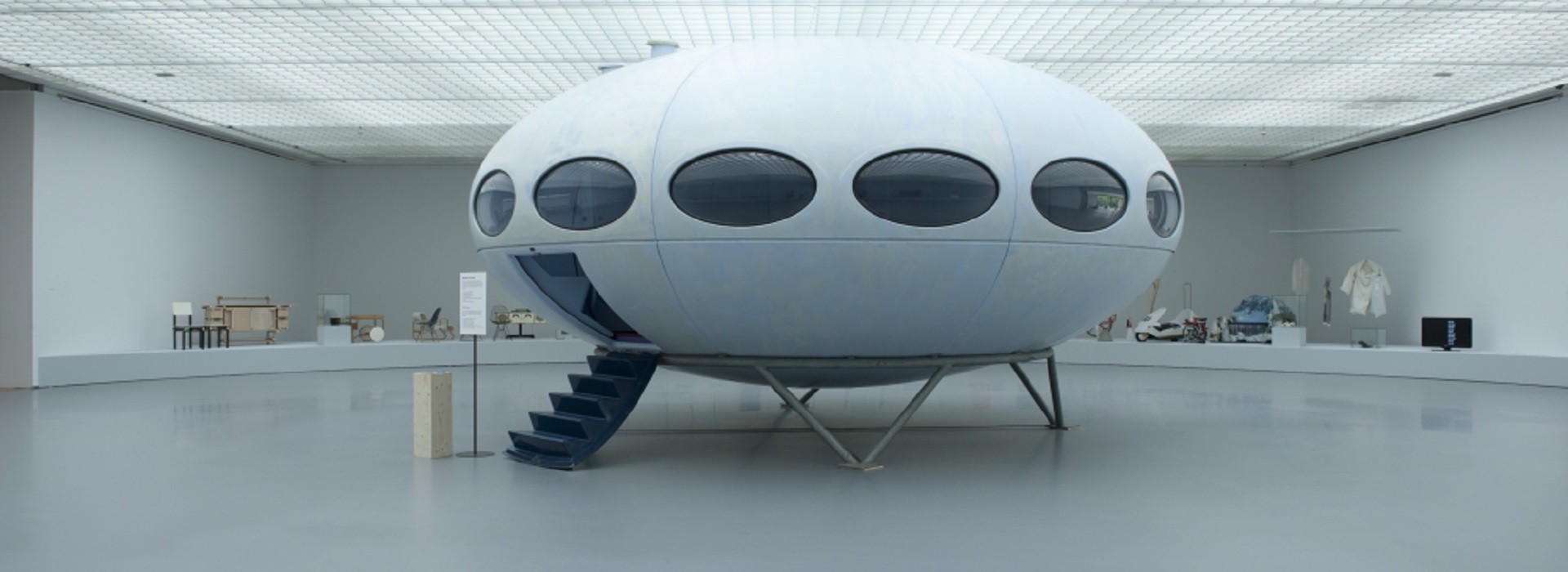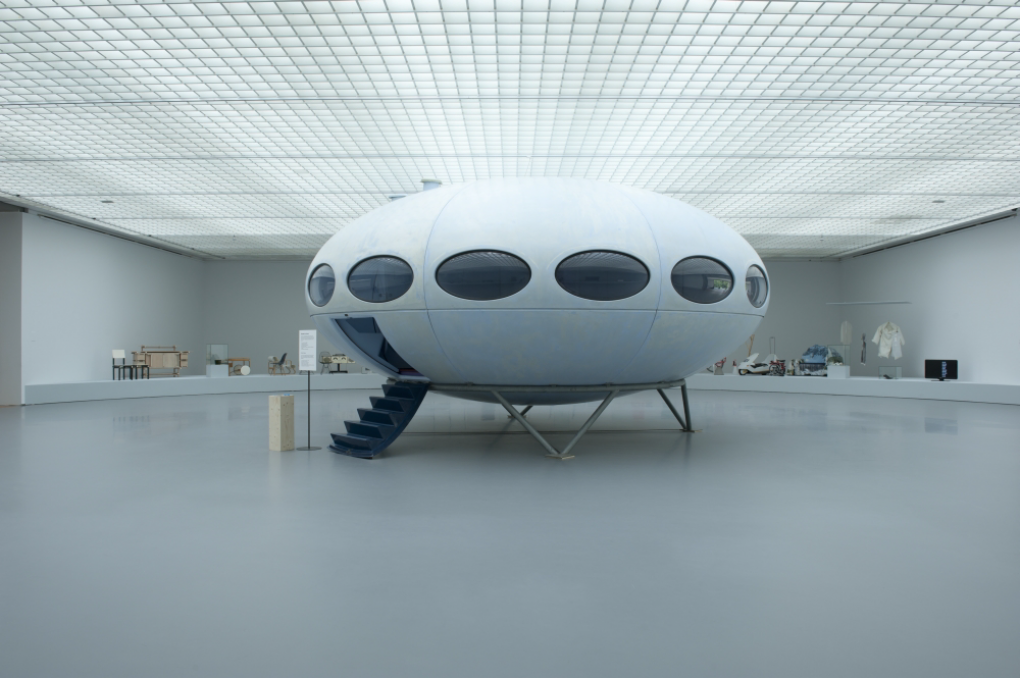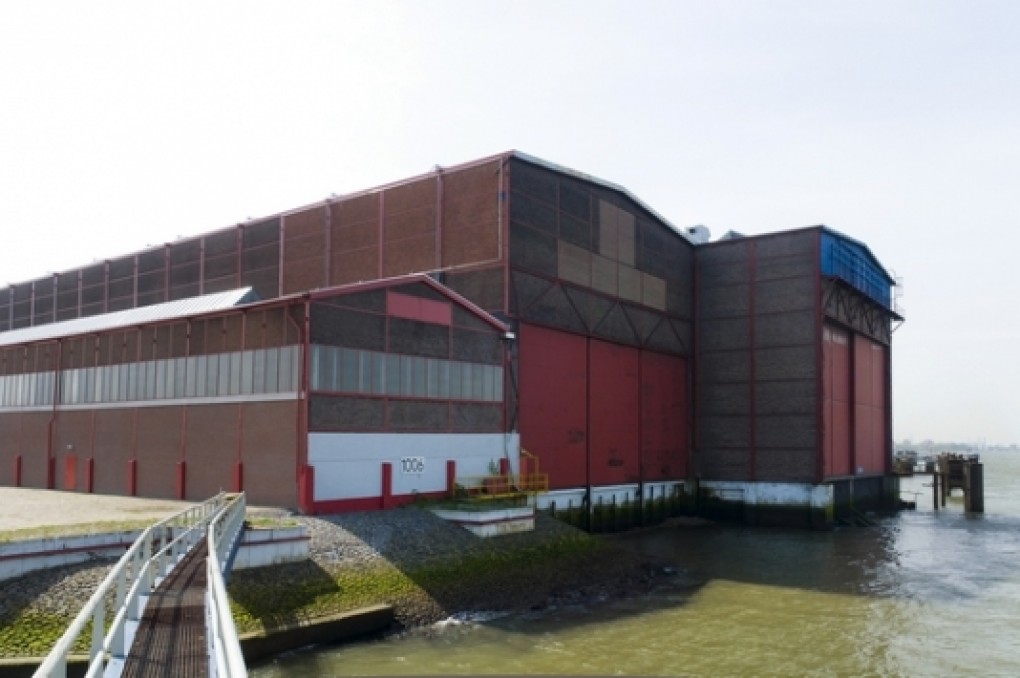


Donors, friends and guests with a privilege pass may book a single or multiple time slots here
Donors, friends and guests with a privilege pass may book a single or multiple time slots here
Would you also like to experience more Boijmans or give a friendship as a gift? Join as a Friend and get invited for the annual Museumpark Vriendendag. Will we see you or your friend in the depot soon?

In 2007, Museum Boijmans Van Beuningen came into possession of a mobile holiday home, with a highly appropriate name ‘Futuro’: house of the future.
The polyester house, reinforced with fibreglass, was designed in the years 1964-1968 by the Finnish architect Matti Suuronen. It is a typical example of modern design at the end of the 1960s.
It is estimated that 25 Futuros were made worldwide based on this prototype. The elliptical shape of the house, with 20 oval perspex windows the way it stands “on high metal legs”, gives it a futuristic, almost floating character. The entrance steps that are like the stairway in an aircraft. The Futuro can be completely dismantled and was intended for travel. When erected, the diameter is 8 meters and the “house” is 4 meters high.
It is made up of sixteen light blue fibreglass reinforced polyester segments filled with PUR foam. The interior of the skin is purple. The interior offers space for a living room, two bedrooms, a kitchen and a bathroom. The eight plastic armchairs/chaises longues with red arms suggest a lounge-like ambiance. The Futuro had deteriorated drastically. Erecting and dismantling the house many times and the natural decay of the material meant that restoration was essential.


In 2009, a start was made of the restoration of Matti Suuronen’s Futuro from 1968, a restoration that could take place thanks to support from the BankGiroLoterij. Research and restoration were undertaken by Lydia Beerkens (restorer of modern art) in collaboration with Polyproducts in Werkendam. Important principle is that it was a prototype. The first expression of the mobile home, of which there are various versions throughout the world, is unique and as such an important historic document. It was designed as a holiday home and both in design and in material (reinforced polyester) was experimental in nature. The interior and the polyester outer shell had suffered severely from the passage of time.
During the restoration, dirt was removed, holes were filled and missing parts replaced. The aged interior was given its original appearance wherever possible; damage was repaired and missing items were - where unsightly - replaced. It is not known whether all parts are original. That is why a choice was made to retain (for the time being) the existing interior components and to make choices based on the knowledge of the materials of that period. The polyester outer skin was given a protective wax layer which offers sufficient protection as long as the Futuro is not exposed to rain and wind. It was exhibited for the first time by the museum towards the end of 2011 in a temporary presentation in the Submarine Wharf.

